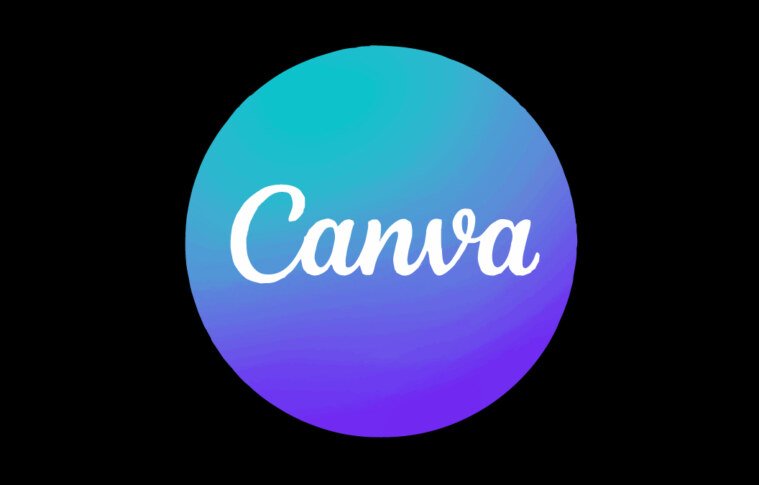Introduction
Launched in 2013 by Melanie Perkins, Cliff Obrecht, and Cameron Adams, Canva started as a simple solution to a widespread problem: making graphic design accessible to everyone. What began as a platform for creating simple school yearbooks has now evolved into a global powerhouse with millions of users, enabling both beginners and professionals to design visually appealing content without advanced graphic design skills. Today, Canva is valued as one of the leading SaaS (Software-as-a-Service) companies, with a user base spanning across the globe.
This case study explores how Canva transformed graphic design and rose to become a SaaS unicorn by democratizing creativity and building a user-friendly platform that scales across industries.
Key Factors Behind Canva’s Success
1. User-Centric Design
Canva’s simple, drag-and-drop interface made design accessible to non-designers. Its broad library of templates, stock images, fonts, and icons allowed users to quickly create professional designs without the need for advanced technical skills.
2. Freemium Business Model
Canva’s freemium model, offering free basic tools with premium features available via subscription, attracted a large user base while monetizing through upgrades, premium content, and enterprise solutions.
3. Collaborative Features
Canva made it easy for teams to collaborate in real-time, allowing users to create, edit, and comment on designs together, making it an ideal tool for businesses, marketers, and social media managers.
4. Global Accessibility
By offering a web-based platform and later expanding its mobile app capabilities, Canva ensured that its tools were accessible on any device, which was a game-changer for users in emerging markets and regions with limited access to high-end design software.
5. Strategic Partnerships
Canva’s partnerships with major players like Google, Dropbox, and social media platforms allowed it to expand its user base and integrate seamlessly into the digital workflow of businesses, enhancing its value proposition.
Business Performance and Milestones
| Metric | 2017 | 2019 | 2021 | 2023 (Estimated) |
| Valuation ($B) | 3.2 | 6.0 | 40.0 | 60.0+ |
| Registered Users (Million) | 15 | 30 | 60 | 150+ |
| Revenue ($M) | 100 | 350 | 1,000 | 3,500+ |
| Team Size | 200 | 1,000 | 2,000+ | 3,000+ |
| Countries Served | 100 | 170 | 190+ | 190+ |
Key Innovations that Led to Canva’s Rise
1. Template-Based Design
The foundation of Canva’s success is its easy-to-use design templates. These templates cater to a wide range of users—from social media managers creating Instagram posts to small businesses making marketing flyers—enabling users to create high-quality designs in minutes.
2. Design School and Tutorials
Canva further democratized design by offering educational resources like Canva Design School, which empowers users to learn design fundamentals while using the platform, reducing the entry barrier for beginners.
3. Canva for Enterprise
In response to growing demand from businesses, Canva launched Canva for Enterprise, offering teams advanced collaboration tools, brand kits, and design management features, helping companies maintain consistency and streamline their creative workflows.
4. Canva Pro and Content Marketplace
The introduction of Canva Pro brought premium design assets, team features, and advanced tools, while the content marketplace allowed designers to monetize their own creations, creating a thriving ecosystem.
Challenges and Strategic Responses
| Challenge | Strategic Response |
| Competing with Adobe and other design tools | Focused on simplifying the design process and offering easy-to-use features for non-designers. |
| Scaling the platform for large organizations | Introduced advanced collaboration tools and Canva for Enterprise. |
| Monetizing a freemium model | Added premium content, advanced features, and business solutions like Canva for Teams. |
| Brand and cultural expansion | Translated platform into multiple languages and localized features to serve a global user base. |
Impact on the Design and SaaS Industry
1. Democratization of Graphic Design
Canva empowered millions of users worldwide, from freelancers to large enterprises, to create professional-grade designs without expensive software or specialized knowledge.
2. Empowering Small Businesses
Small businesses and entrepreneurs can now create marketing materials, social media content, and even websites using Canva’s affordable tools, helping them compete with larger organizations.
3. Disruption of Traditional Design Tools
Canva disrupted the graphic design software industry, traditionally dominated by heavyweights like Adobe, by offering an easy-to-use alternative with lower barriers to entry.
4. Building a Global Creative Community
By allowing users to share and collaborate on designs, Canva nurtured a global creative community, fostering both individual creativity and business innovation.
Future Growth Drivers
1. Artificial Intelligence (AI) and Automation
Canva is heavily investing in AI, which could further streamline design processes and assist users in creating personalized and optimized content with minimal effort.
2. Expansion into Video and Animation
As demand for video content grows, Canva’s continued development in video and animation tools will allow it to stay ahead in the fast-evolving content creation market.
3. Marketplace and E-commerce Integration
Canva’s growing marketplace, which includes customizable templates, design assets, and even physical products like prints, presents a future opportunity for direct-to-consumer sales.
4. Increased Focus on Collaboration and Enterprise
Canva’s expansion into enterprise solutions, including its new features for teams, will continue to drive growth as more businesses look for scalable creative tools.
Conclusion
Canva’s rise from a small start-up to a global SaaS unicorn is a testament to the power of simplifying complex tasks and making them accessible to all. By creating a user-friendly, affordable platform that empowers individuals and businesses to create high-quality content, Canva has disrupted the graphic design industry and redefined what it means to be creative in the digital age.
As the demand for fast, visual communication continues to rise, Canva is poised to remain a leader in the creative SaaS market, expanding its reach and capabilities while staying true to its core mission of democratizing design.



